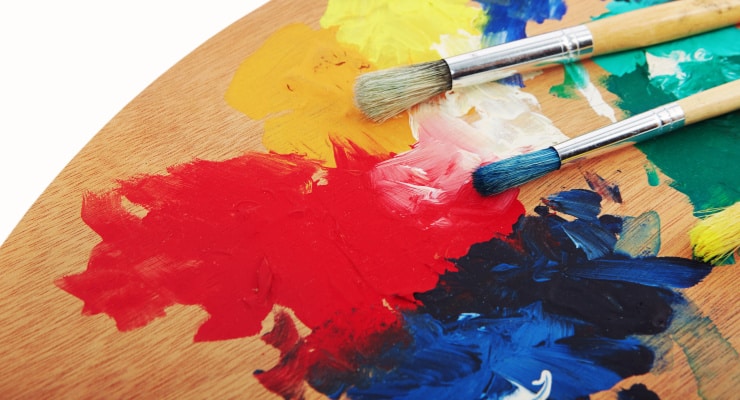Art has been an integral part of human expression since ancient times. From cave paintings to modern abstract masterpieces, art allows individuals to communicate, interpret, and explore the world around them in unique ways. While some may possess a natural talent for artistic endeavors, others may need guidance and instruction to unlock their creative potential. This is where art classes come into play.

Benefits of Taking Art Classes
Enhancing Creativity
Art classes provide a structured environment for individuals to explore their creativity. Through various exercises and projects, students learn to think outside the box, experiment with different techniques, and express themselves artistically.
Stress Relief
Engaging in art can be a therapeutic experience, offering a much-needed escape from the stresses of daily life. The act of creating art allows individuals to focus their energy and attention on the present moment, promoting relaxation and mindfulness.
Developing Fine Motor Skills
Art classes often involve activities that require precise hand-eye coordination and fine motor skills. Whether it’s drawing, painting, or sculpting, practicing these skills can have a positive impact on overall dexterity and coordination.
Boosting Confidence
As students progress in their artistic journey, they gain confidence in their abilities and creative vision. The sense of accomplishment that comes from completing a project or mastering a new technique can be incredibly empowering.
Types of Art Classes
Art classes come in a variety of forms, each focusing on different mediums and techniques. Some of the most common types of art classes include:
Drawing
Drawing classes typically cover fundamental drawing techniques, such as line, shape, perspective, and shading. Students may work with pencils, charcoal, pastels, or ink to create their compositions.
Painting
Painting classes explore various painting techniques, including watercolor, acrylic, oil, and mixed media. Students learn about color theory, composition, and brushwork as they create their own unique works of art.
Sculpting
Sculpting classes teach students how to manipulate three-dimensional materials, such as clay, wood, metal, or stone, to create sculptures and reliefs. Students learn about form, texture, and sculptural techniques.
Pottery
Pottery classes focus on the art of ceramics, including wheel throwing, hand-building, glazing, and firing. Students create functional and decorative pottery pieces while learning about the properties of clay and the pottery-making process.
How to Choose the Right Art Class
With so many options available, choosing the right art class can seem daunting. Here are some factors to consider:
Consider Your Interests
Think about the type of art that interests you the most. Whether it’s drawing, painting, sculpture, or pottery, choose a class that aligns with your creative passions.
Level of Expertise
Consider your skill level and experience when selecting an art class. Some classes may be geared towards beginners, while others may cater to more advanced students.
Class Size and Atmosphere
Think about the size of the class and the overall atmosphere of the studio or learning environment. Some students may thrive in smaller, intimate settings, while others may prefer larger, more collaborative spaces.
Finding Art Classes Near You
Whether you’re looking to explore a new hobby or hone your existing skills, there are plenty of options for finding art classes near you. Here are a few places to start your search:
Local Art Studios
Many cities and towns have local art studios or galleries that offer a variety of classes and workshops for all skill levels.
Community Centers
Community centers often host art classes and programs for residents of all ages. These classes may be more affordable and accessible than those offered at private studios.
Online Platforms
In addition to traditional in-person classes, there are also plenty of online platforms that offer virtual art classes and tutorials. This can be a convenient option for those with busy schedules or limited access to local resources.
Tips for Success in Art Classes
Whether you’re a beginner or a seasoned artist, here are some tips for making the most of your art class experience:
Practice Regularly
Consistency is key when it comes to improving your artistic skills. Set aside time each day or week to practice your craft and experiment with different techniques.
Don’t Be Afraid to Experiment
Art is all about exploration and self-expression. Don’t be afraid to try new things, make mistakes, and push the boundaries of your creativity.
Seek Feedback and Guidance
Don’t hesitate to ask for feedback from your instructor or fellow classmates. Constructive criticism can help you identify areas for improvement and grow as an artist.
Conclusion
Art classes offer a unique opportunity for individuals to explore their creativity, develop new skills, and connect with others who share their passion for the arts. Whether you’re a beginner or an experienced artist, there’s always something new to learn and discover in the world of art.
FAQs (Frequently Asked Questions)
- Are art classes suitable for beginners?
- Absolutely! Many art classes cater to beginners and provide step-by-step instruction to help you build a strong foundation in your chosen medium.
- What supplies do I need for an art class?
- The required supplies will vary depending on the class and medium. In general, you’ll need basic supplies such as pencils, paper, brushes, paint, clay, or other materials specified by the instructor.
- How can I find affordable art classes?
- Check with local community centers, libraries, and art supply stores for affordable class options. You can also look for online tutorials and resources that offer free or low-cost instruction.
- What if I’m not good at art?
- Art is subjective, and everyone has their own unique style and vision. Don’t be discouraged if you feel like you’re not “good” at art – the most important thing is to enjoy the process and express yourself creatively.
- Can I take art classes online?
- Yes, there are plenty of online platforms that offer virtual art classes and tutorials. This can be a convenient option for those with busy schedules or limited access to in-person resources.
